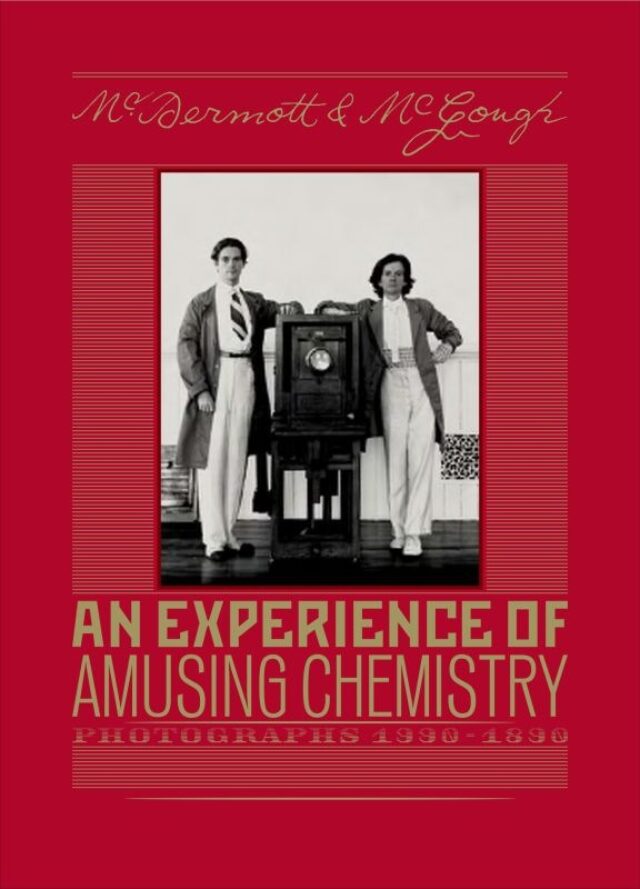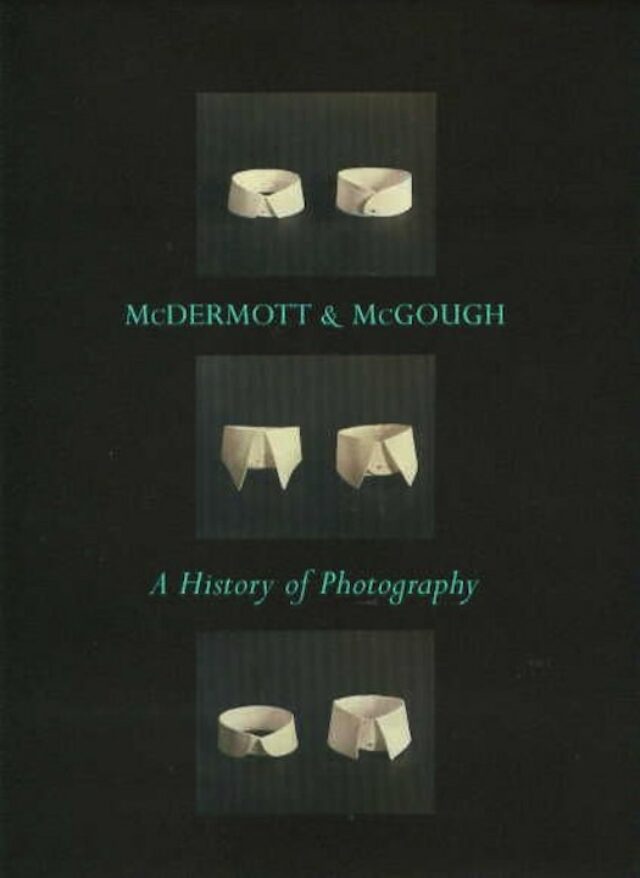McDermott & McGough

AN EXPERIENCE OF AMUSING CHEMISTRY
McDermott & McGough met in New York’s East Village art scene in the 1980s, and are renowned for their performative fusion of art and life. Rebelling against the confines of chronological time, the artists appropriate imagery and objects from the late 1800s and early 1900s, reconstructing their lives as the Victorian dandy and flacneur.
This volume shows two decades of photographic work by two of the least conventional and most fanciful protagonists of contemporary art. It includes more than 120 works through numerous historic photographic media including palladium, gum, salt and cyanotype prints.

BECAUSE OF HIM
The book from the exhibition includes several photo-realist paintings of carefully selected movie scenes in which a dramatically framed actress is central. The paintings are composed of two separate scenes from different movies, one black-and-white and one color, stacked horizontally so that one scene seems to bear weight upon the other and a new relationship or narrative is formed. The strong female protagonist of each frame conveys the scenes’ emotional impact, and the inevitable nostalgia of McDermott & McGough’s selected imagery lends a sense of cool introspection.

A HISTORY OF PHOTOGRAPHY
Casting themselves as latter-day dandies of an era gone by, the artist team of McDermott & McGough have minded the history of aesthetics as a means to illuminate the present condition of art and culture. With biting irony, and unmistakably camp sensibility, McDermott & McGough have long employed a visual language that draws heavily from earlier art movements. Still, their work is closely tied to the day. This, the first retrospective monograph of their photographic work, underscores the tenacity of their mission-to seek a future through the past. Included are the duo’s portraits, nudes, still lifes, and architectural pictures utilizing such archaic processes as gum- bichromate, cyanotype, platinum palladium, and salt printing.

DETROIT
Detroit seeks to tackle themes of social repression in America of the late 1950s, and particularly the petit-bourgeois suburbia of the artists’ childhoods. The works encapsulate an America in its post-war, pre-pop moment. The subjects are trapped in ennui, lost in longing daydreams, and searching for connections with people and social environments that lie outside the framework of their own nuclear family connections promised by the exciting possibilities afforded by the telephone, the television, and the gossip magazines that began to disseminate America’s fascination with celebrity. These photographs posit an American ‘still- life’ of ubiquitous small-town locations. The subjects display varying degrees of innocence, knowingness and longing, evoking feelings of alienation, isolation, and disconnection from hetero-normative normalcy. Typical of McDermott and McGoughs’ work, these images explore various tropes of historical reconstruction, identifying the various sources of sexual tension that could be read ‘between the lines’ in that historical moment. 1958 is both the year that Paul Outerbridge Jr. died, and the year of McGough’s birth.
The works were shot on location at The Henry Ford Museum in Michigan, an eponymous repository of material culture, built by the auto tycoon in the late 1920s. Conceived as Ford’s vision to document the genius of ordinary people by preserving the objects they used in the course of their everyday lives, it grew to become one of the largest collections of its kind ever assembled. Premised upon rigorous historical accuracy the Museum celebrates the development of post-Industrial America through authentic objects, stories, and traditions of ingenuity, resourcefulness and innovation.
Please update your browser to access Creative Exchange Agency.